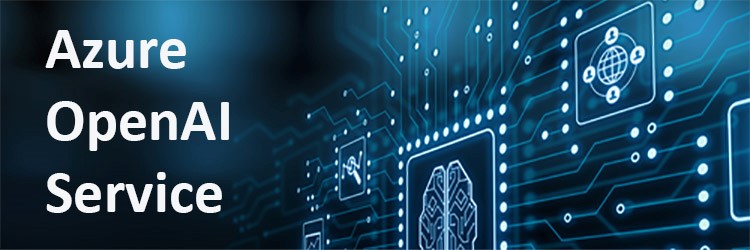
Azure AI
AI has made great strides over the past few years, with advancements in almost every domain automating and enhancing our everyday experiences. For some tasks, AI has surpassed the human capability to see, hear, and understand, but there is still a long way to go to develop AI that is truly intelligent and can use common sense reasoning to conclude. Microsoft is focusing its research on advancing AI to create intelligence capable of augmenting human ingenuity and making it available to everyone.
OpenAI and Microsoft
Microsoft partnered with OpenAI in 2019 to enable its vision of creating artificial general intelligence that benefits all of humanity. OpenAI has been at the forefront of several major AI breakthroughs, powered by Azure AI's supercomputing platform. OpenAI launched GPT-3 model in 2020 and has been improved at an incredible pace with models such as CLIP, DALL.E, and more recently, OpenAI Codex, a code generation model that powers GitHub Copilot. Microsoft has leveraged these models within the Power Platform and Power BI to make data and tools more accessible to customers.
In 2020, OpenAI launched the OpenAI API to provide developers with a platform to apply the AI models they develop. This brand-new platform opened up new possibilities for developers. Not only does the API give access to generative capabilities of GPT-3 and Codex, but the API is also designed in a way that is simple to use and flexible enough to make machine-learning teams more productive. With the OpenAI API on the market for just over a year, developers and companies use its capabilities to build new experiences and delight their customers. Enterprises of all sizes are creating differentiated experiences with the ability to comprehend, summarize, and extract information from context very quickly.
Major brands like Twitter, Reddit, Disney, and several other new startups are deriving value from the API in a very meaningful way. The OpenAI API enables the agility to bring their innovations to market quickly. Jarvis is a company that's transforming the creative process of how we write. Using GPT-3, Jarvis makes it fast and easy to create content for blogs, social media, websites, and more. It is also used by content marketers and companies such as Airbnb, Autodesk, and IBM. Enterprises are taking their GPT-3 based apps to production, increasingly need dedicated throughput and latency consistency for their workloads. They also require isolation, security, and compliance guarantees that satisfy various regulatory standards.
Azure OpenAI Service
To meet these customer needs, Microsoft has launched Azure OpenAI Service, a new Azure service that offers the OpenAI API on Azure with Azure's enterprise-grade capabilities. The Azure OpenAI service allows users to experiment with, tailor, and deploy OpenAI models at scale. The service offers GPT-3 and Codex models with the OpenAI API, customization capabilities, and tools to help users have control over the content they generate and deploy. These capabilities leverage Azure's global cloud infrastructure, which means that it can support the toughest production workloads, requirements around scale, regional deployments, security, compliance, and reliability.
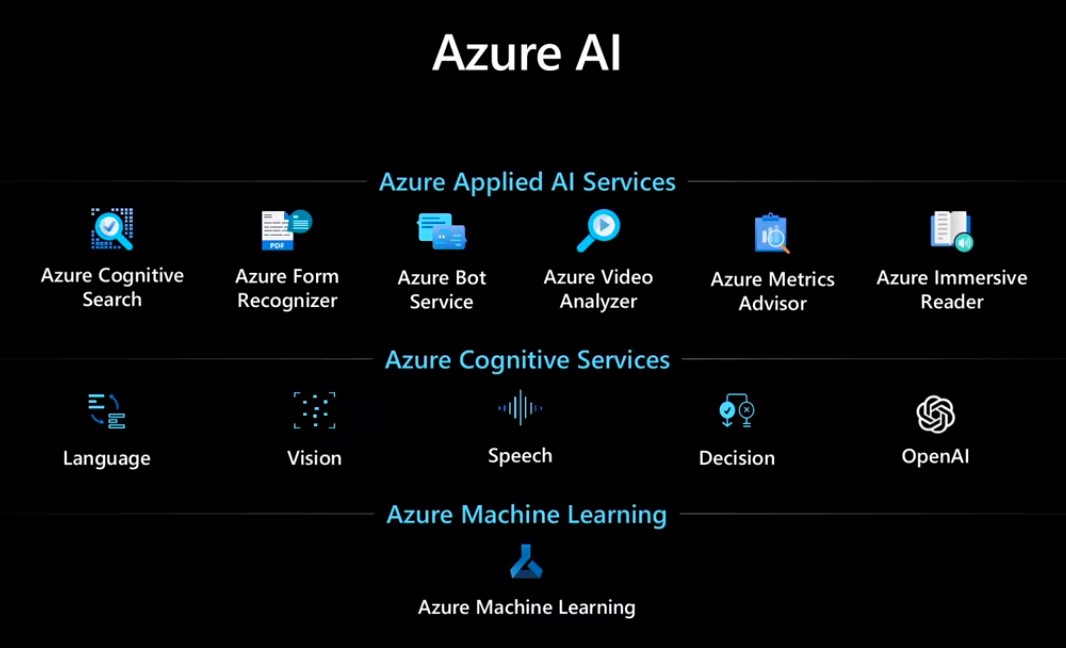
The Azure AI portfolio includes a wide range of cognitive services which provide specific APIs that leverage world-class AI models to deliver capabilities that surpass human abilities for computer vision, speech, and language tasks. The Azure OpenAI service joins these Azure Cognitive Services, adding the GPT-3 and Codex models to powerful foundation models Azure offers.
OpenAI models
The Azure OpenAI service is powered by a group of models with different capabilities and attributes. The base series is a set of GPT-3 models that can understand and generate natural language. The service offers four base GPT-3 models called Davinci, Curie, Babbage, and Ada with different levels of capabilities suitable for different tasks. The Codex series is a set of models that can understand and generate code, translate natural language to code and code to language.
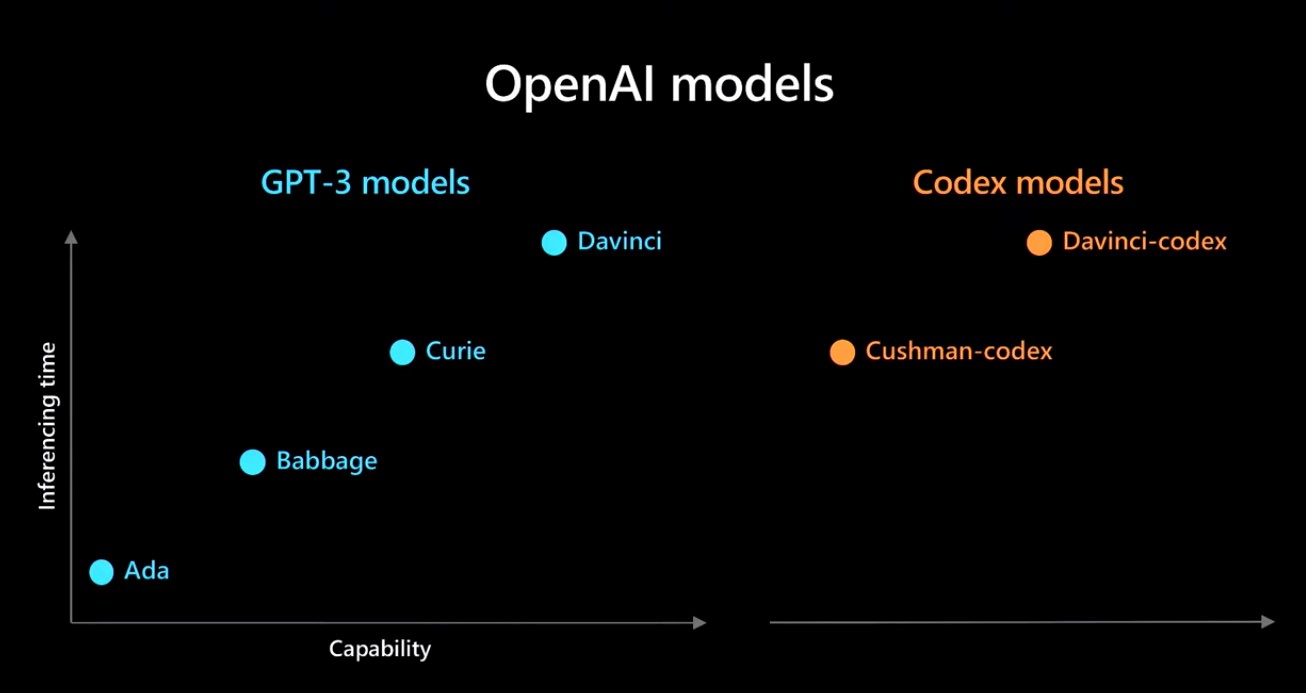
GPT-3 models
Davinci is the most capable model and can perform any task that other models can, but with fewer instructions. Davinci produces the best results for applications that require a lot more understanding of the content, such as summarization for a specific audience and creative content generation. Ada is the fastest GPT-3 model and can perform tasks such as parsing text, address correction, and tasks that don't require many nuances. The service makes it easy to experiment with these models and find the right balance between capability and latency performance for your use case.
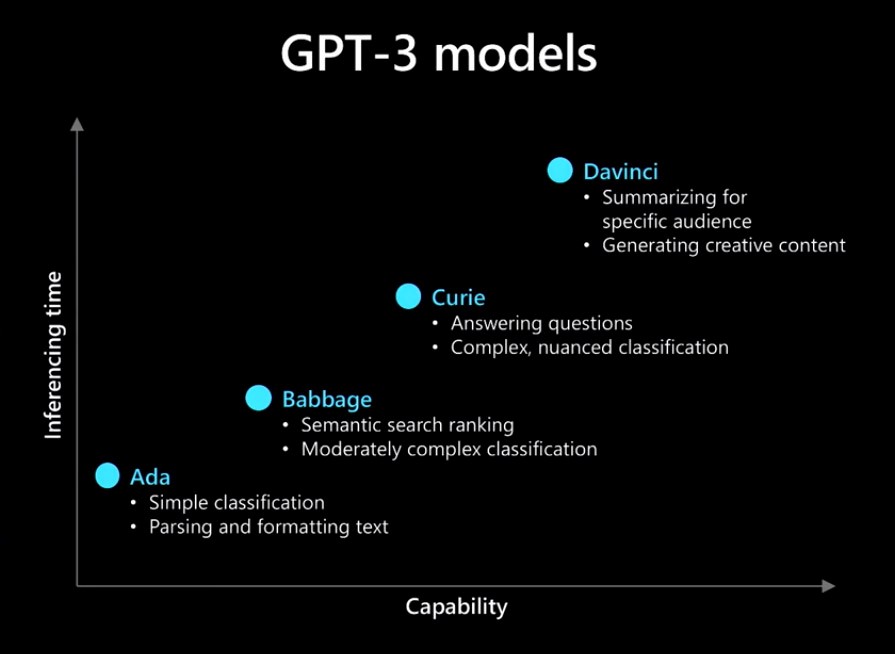
GPT-3 models can be applied to any natural language task and can enable a vast and expanding set of use cases for customers. GPT-3 accelerates human creativity with ideas generated nearly instantaneously. For businesses, this means more effective product descriptions, ads, headlines, and customer correspondence. For example, Microsoft's Dynamic 365 Marketing platform aims to reduce the time it takes for customers to write effective marketing content. The app uses GPT-3, combined with past context, to produce tailored results which help users publish effective content quickly. GPT-3 is adept at understanding the nuances in text, extracting meaning, and summarizing information in the right tone for the right audience.
It helps companies like Zebrium troubleshoot problems faster. Their solution parses logs, correlates anomalies, and recognizes patterns to find the root cause. It then uses GPT-3 to summarize the root cause reports in plain English to help stakeholders make decisions quickly.
Another example is ROSS Intelligence, which offers a legal research platform that uses GPT-3 to better search through legal text, synthesize law so that legal professionals can provide sound and timely advice to their clients.
OpenAI Codex
The Codex models are descendants of the base GPT-3 models and trained on a large amount of source code in public GitHub repositories to produce working code from natural language, which means users can issue commands in English to any software application with an API. Codex models are the most capable in Python and proficient in over a dozen languages, including JavaScript, Go, Ruby, and SQL. Similar to GPT-3, users can tailor Codex to a variety of tasks, including code generation. With Codex, enterprises can make their APIs and tools more accessible to more users without a steep learning curve. It makes developers more productive and accelerates software development.
Recently, GitHub launched GitHub Copilot, an AI pair programmer that helps users write code faster with less work. GitHub Copilot draws context from comments and code and suggests individual lines and whole functions instantly. It is powered by Codex models running on Azure OpenAI service.
Let's see how the service works. The GitHub Copilot service talks to your VSCode editor, and the editor sends context from your current file to the Codex model running on the Azure OpenAI service. It then responds with text that is likely to follow the content. It is then displayed as suggestions to the editor, and users can accept or tweak these suggestions.
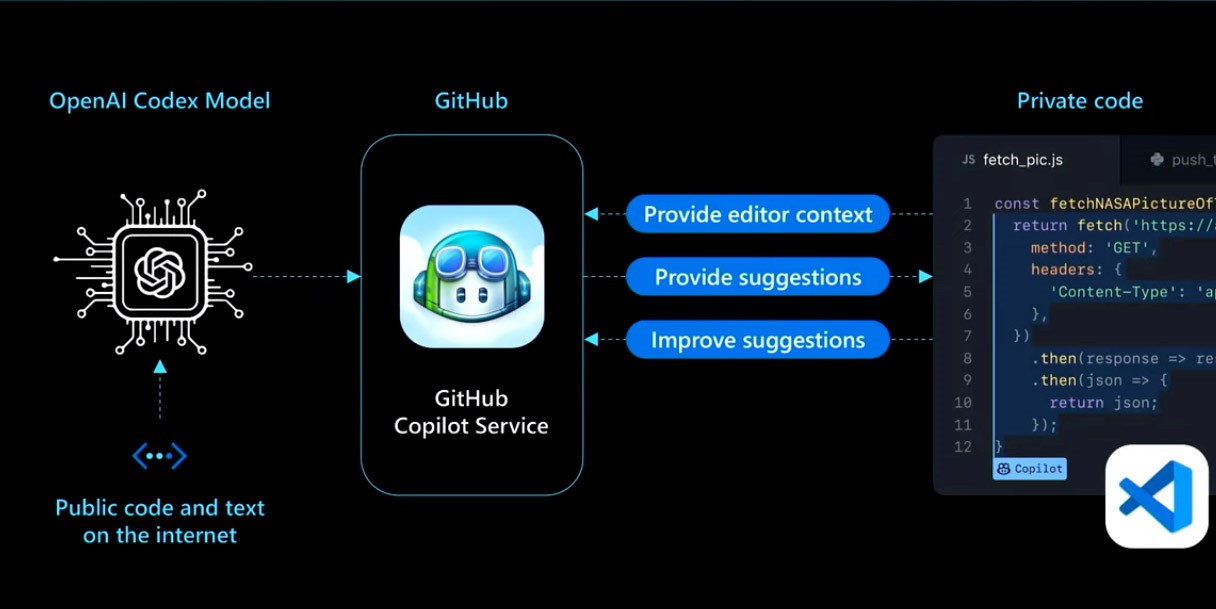
Here are some other examples of how Microsoft uses Azure OpenAI to innovate on behalf of customers.
Power BI: Microsoft's Power BI platform is making data analytics accessible for everyone with the ability to generate DAX expressions with natural language. DAX is the expression language used in Power BI and Excel to define complex calculations.
Power Platform: The Power Platform enables app development without writing code, except when users write formulas in Power Fx. With Azure OpenAI, users can express what they want to accomplish in natural language, and Power Platform generates these formulas automatically, saving time and skipping the learning curve.
The Azure OpenAI service enables this innovation with the OpenAI API. Democratizing these models creates a powerful AI software platform, and the OpenAI API makes this technology incredibly accessible, unlocking creativity with easy experimentation. The OpenAI API allows all builders, from non-developers to ML experts, to go from building a compelling prototype in five minutes to scaling customized versions to production level loads. The API's simple text in and text out interface allows users to apply it to any language task or code task. Imagine if anyone in a company, regardless of their programming experience, could bring their creativity to life with a proof of concept in a few minutes, illustrating what's possible before making a costly decision to fund a project. It unlocks innovation and ideas for enterprises in a meaningful way. Once a developer has his proof of concept developed, the API makes it easy for developers to customize the model accuracy for their scenario. This deeper customization, which traditionally requires machine-learning expertise and a steep learning curve, is now made accessible to all developers without taking away any of the control that machine-learning teams desire.
The OpenAI API and models provide tremendous capabilities for handling new customer scenarios and help businesses achieve more. But to apply these scenarios safely, enterprises also need the capabilities and tools to ensure that the models only generate content that is suitable for their application and prevent misuse. Microsoft has designed the Azure OpenAI API with built-in features to empower users to apply this technology in a wide range of applications. With content filters, customers can customize the tone and topic of the content that the models produce. They also added safety features to ensure that everyone is using the system for its intended purpose. Microsoft will be releasing guidance and implementation practices to help users design their applications while keeping safety front and centre.
References
Microsoft Ignite Sessions





